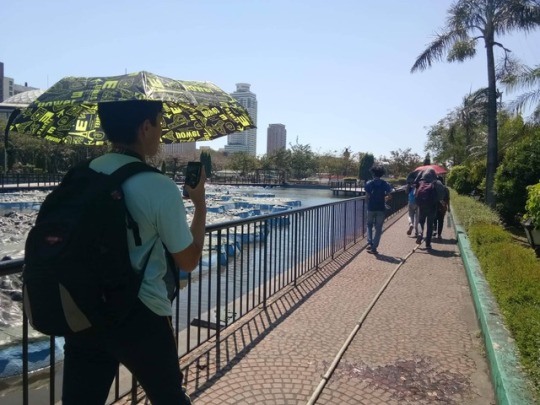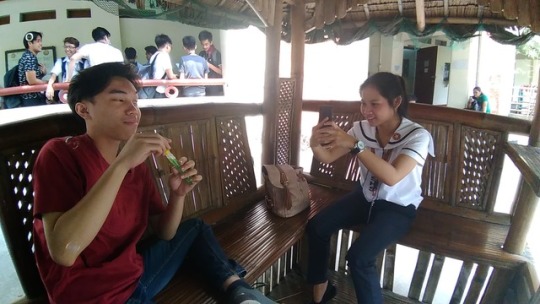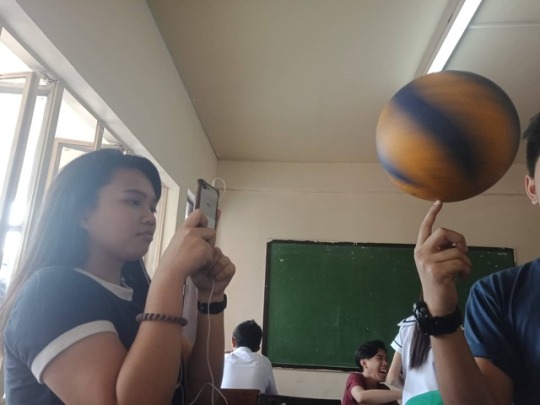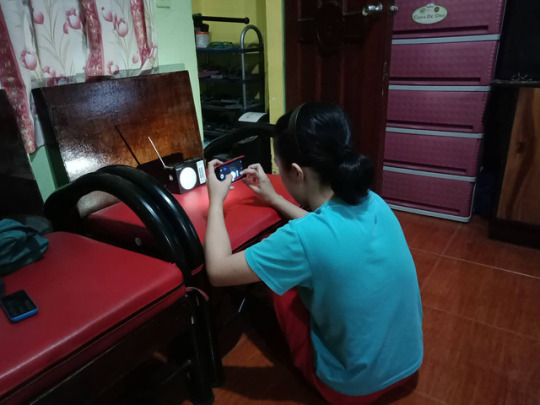Text
#30 "Star"

Stars do not actually twinkle. Stars twinkle because their light has to pass through several miles of Earth's atmosphere before it reaches the eye of an observer. When starlight enters our atmosphere it is affected by winds in the atmosphere and by areas with different temperatures and densities. This causes the light from the star to twinkle when seen from the ground.
0 notes
Text
#29 "Rainbow"

Rainbow is caused by reflection, refraction, and dispersion of light in water droplets, so if we can notice; most of the time rainbow appears after rain. When sunlight encounters the raindrop, the light from the sun will reflect and refract in the raindrop. The amount of refracted light depends on its wavelength and its color. This spectrum of light appearing in the sky is usually full circle when we see it from above, but our observer's eye sees only an arc when we are at the ground. The colors that we commonly see in the rainbow is the Newton’s sevenfold red, orange, yellow, green, blue, indigo and violet, in short, ROYGBIV. A double rainbow is also possible just like in the picture, but the other one has fainted than the primary rainbow. This is caused also by a reflection of sunlight but the difference is it is a double reflection.
0 notes
Text
#28 "Dew on the Leaves"

Dews on plants that expose every morning are because of condensation. When we say condensation, it is the change of the physical matter; from gas into liquid phase. When the temperature drops until the dew point, the atmospheric water vapor condenses and form small droplets on the surface. This process distinguishes from fog or clouds and it is a reverse of evaporation. This is usually happening at night so when we wake up in the morning we can see the dews on the leaves of the plant due to the condensation of the fog.
0 notes
Text
#27 "Moon"
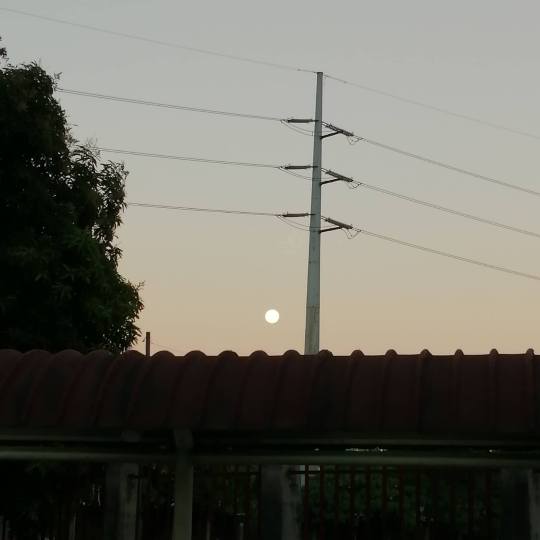
A moon is defined to be a celestial body that makes an orbit around a planet, including the eight major planets, dwarf planets, and minor planets.
The brightest and largest object in our night sky, our moon makes Earth a more livable planet by moderating our home planet's wobble on its axis, leading to a relatively stable climate. It also causes tides, creating a rhythm that has guided humans for thousands of years. The Moon was likely formed after a Mars-sized body collided with Earth.
Earth's only natural satellite is simply called "the Moon" because people didn't know other moons existed until Galileo Galilei discovered four moons orbiting Jupiter in 1610.
0 notes
Text
#26 "Burning Woods"

The burning of anything is a chemical change. Burning wood is an example of a chemical change. The burning action changes the chemical makeup of the wood. As we all know, the wood is made up of cellulose and when it will combine with oxygen, it will produce carbon dioxide gas and water vapor, leaving ashes and releasing light and heat. The simple wood becomes a few different things when it was burnt. The new substance or products are entirely different from the original material. Chemical changes like this are the reactions which are non-reversible; meaning cannot be converted to its original state. They can’t go back to the wood and there isn’t any wood left in the burnt substances.
0 notes
Text
#25 "Plants"

Plant needs photosynthesis to create their own food. It needs sunlight, carbon dioxide, and water. Photosynthesis is the process in which green plants and other certain organisms transform light energy into chemical energy. As you can see in the photo, the form of the leaves is spread out. It’s because it needs to get enough sunlight. Leaves have tiny pores called stomata, this is where the carbon dioxide enter. Plant cells contains tiny structure called chloroplasts that contain chlorophyll that makes the leaves color green, also chlorophyll is used for trapping the light energy from the sun to combine the carbon dioxide and water to produce sugar in the form of glucose. In the process, plants can convert carbon dioxide and water into oxygen. Oxygen leaves the plant using stomata and the glucose gives nourishment to the plant.
0 notes
Text
#24 "Basketball"

Playing basketball is one of the example of projectile motion. A basketball is a projectile when it is being shot. Even though you are shooting upwards or forward, the projectile motion causes the ball to swish through the basket.
If we lived in zero gravity, the projectile motion would not be the same and the ball would continue to go at a constant speed and straight line upwards forever. Playing basketball in space would be pointless and impossible because there is no gravity and air friction so the ball would continue to go up after you release it.
0 notes
Text
#23 "Bubbles"

Bubbles provide the opportunity to study science concepts such as elasticity, surface tension, chemistry, light, and even geometry.
A bubble is a thin film of soapy water. Most of the bubbles that you see are filled with air, but you can make a bubble using other gases, such as carbon dioxide. The film that makes the bubble has three layers. A thin layer of water is sandwiched between two layers of soap molecules. Each soap molecule is oriented so that its polar (hydrophilic) head faces the water, while its hydrophobic hydrocarbon tail extends away from the water layer. No matter what shape a bubble has initially, it will try to become a sphere.
The sphere is the shape that minimizes the surface area of the structure, which makes it the shape that requires the least energy to achieve.
Though soap bubbles are traditionally made from soap, most bubble solutions consist of detergent in water. Glycerin often is added as an ingredient. Detergents form bubbles in much the same way as soap, but detergents will form bubbles even in tap water, which contains ions that could prevent soap bubble formation. Soap contains a carboxylate group that reacts with calcium and magnesium ions, while detergents lack that functional group. Glycerin, C3H5(OH)3, extends the life of a bubble by forming weaker hydrogen bonds with water, slowing down its evaporation.
0 notes
Text
#22 "Sunlight"

This picture represents physical science because one of our natural sources of light energy is the sun. The sun is the largest star in our solar system that gives us a lot of energy in the form of light and heat. Sunlight helps us to see anything around us when it is day. It also provides energy to everything here on earth.
0 notes
Text
#21 "Playground Slide"

The laws of physics are responsible for examining how a playground slide works. Several forces have an effect on the efficiency of a slide, the most obvious thing is the force of gravity. Gravity is a constant force that exerts itself on anything that has mass. However, gravity is not the only force that determines the speed or acceleration of an object, or person, traveling down a slide. There are also friction, inertia, and kinetic and potential energy.
The Earth's gravitational pull exerts a downward force on everything on the planet. When someone sits at the top of a slide, gravity is the constant force that pulls the person directly downward. Without the force of gravity pulling a person, a slide wouldn't work at all. Gravity is a core physics concept that affects nearly everything, including playground equipment.
While gravity is an essential element of physics to a playground slide, friction is of equal importance. Friction works against gravity to slow a person's descent on a slide. Friction is a force that occurs whenever two objects rub against each other, such as a slide and a person's backside. Without friction, a slide would accelerate the rider too quickly, resulting in possible injury. Certain materials called lubricants can reduce the effects of friction. This is why water park slides are much faster than playground slides; the water acts as a lubricant. Sitting on wax paper can also reduce the amount of friction.
Newton's first law of motion establishes a physics concept referred to as inertia. According to The Physics Classroom, Newton's law can be summarized as "An object at rest stays at rest and an object in motion stays in motion with the same speed and in the same direction unless acted upon by an unbalanced force." The object (the person) is at rest at the top of the slide. The object, or person, stays at rest until he is pushed, either by himself or someone else. After the push, he accelerates until he reaches a maximum velocity and stays in motion until he is stopped by another force. This is inertia.
When a person first sits at the top of a slide, he or she contains potential energy. Potential energy is any stored energy, and exists in any object or being capable of falling or moving. As he or she begins to slide, the potential energy is converted to kinetic energy. Any object that is in motion contains kinetic energy. The amount of kinetic energy depends on mass and speed. So, the kinetic energy of a person sliding down a slide depends on how much the person weighs and how fast the person is going, which are interrelated factors. No matter which way a person is traveling down a slide, and no matter which angle, that person contains kinetic energy.
0 notes
Text
#20 "LED Lights"

An LED, or light-emitting diode, is a light source based on a semiconductor. Semiconductors are materials that are neither pure conductors nor insulators but have an electrical conductivity somewhere in between. When a current passes through the LED, electrons recombine with holes in the semiconductor, emitting light in the process. The color of the light emitted depends on the range of energies within the semiconductor where no electron states are possible (known as its "band gap").
The first visible-light LEDs were red and, later, green, and were typically used to replace traditional light bulbs in power-indicator lights in electronic equipment such as TVs, and in simple displays such as those used by old calculators. Creation of blue LEDs proved elusive until Shuji Nakamura of the Nichia Corporation in Tokushima, Japan, produced one in 1994. The semiconductor material used in his device was indium gallium nitride, crystals of which were grown on a sapphire substrate. The material can now be grown on silicon, reducing the cost of producing blue LEDs by up to 90%. Blue, green and red LEDs can be combined to produce white light so they can be used to create lamps that use vastly less electricity than incandescent bulbs.
0 notes
Text
#19 "Going Upstairs"
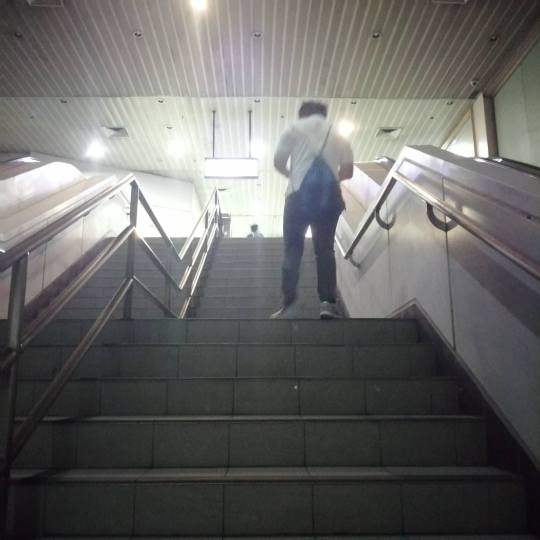
When someone climbs the stairs, energy is transferred from the chemical store of energy in their muscles (food and oxygen) to increase their gravitational potential energy. Gravitational potential energy = mgh, where mg is the weight of the climber and h is the vertical distance climbed.
You have to lift up your body mass under the presence of gravity, so you have to overcome the force of gravity.
While climbing up the stairs, you have to put force on ground, more then your weight, which put same force but in opposite direction, in other words, on you.
0 notes
Text
#18 "Oil and Water"

Oil is flammable. it does not mix with water and used as a lubricant. While water (H20), is a transparent liquid with a chemical compound of 2 hydrogen atoms and 1 oxygen atom. As you can see in the picture, there is water which has an oil above it. It is called emulsion, it is combining two liquids which cannot be mixed. Oil is not soluble in water because it is non-polar and water is polar. The molecules of the two liquids are not attracted to each other.
0 notes
Text
#17 "Transportation"

Car engines turn liquid fuel into heat and kinetic energy. They're full of pipes and cylinders because they work like mini chemical plants. In scientific terms, a car is an energy converter: a machine that releases the energy in a fuel like gasoline (petrol) or diesel and turns it into mechanical energy in moving wheels and gears. When the wheels power the car, the mechanical energy becomes kinetic energy which is the energy that the car and its occupants have as they go along.
Cars, trucks, trains, ships, and planes—all these things are powered by fuels made from petroleum. Also known as "crude oil", petroleum is the thick, black, energy-rich liquid buried deep underground that became the world's most important source of energy during the 20th century.
0 notes
Text
#16 "Photocopier"

A photocopier relies on the principles of electricity and photoconductivity to work. Photoconductivity is the tendency of certain materials to become more electrically conductive after absorbing electromagnetic radiation, such as UV, infrared, visible light, etc. There’s a light-sensitive photoreceptor inside the machine that first attracts and then transfers toner particles onto plain paper to form a copy of a document. Most modern photocopiers rely on a technology known as xerography, which is essentially a dry photocopying technique. It involves using electrically-charged particles to attract and then deposit toner particles onto a piece of paper.
0 notes
